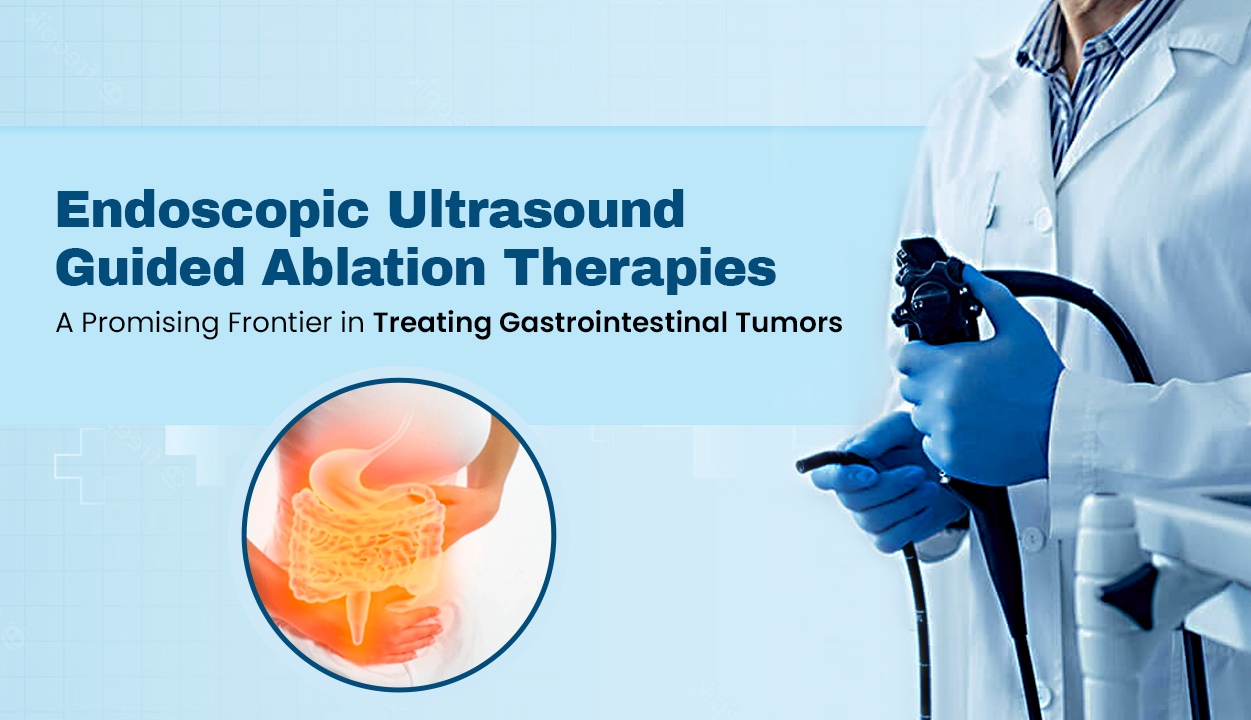
Endoscopic Ultrasound Guided Ablation Therapies: A Promising Frontier in Treating Gastrointestinal Tumors
When we discuss advancements in cancer treatment, it’s impossible to ignore the progress made in treating gastrointestinal tumors. These growths, nestled within the digestive tract, pose unique challenges, but with the advent of innovative techniques like endoscopic ultrasound guided ablation therapies, we are witnessing a game-changing approach to dealing with them.
Embracing Minimally Invasive Procedures
Minimally invasive procedures have revolutionised the medical world, offering patients a reprieve from long hospital stays and painful recovery periods. Endoscopic ultrasound techniques are prime examples of these procedures, granting medical professionals an inside view of the gastrointestinal tract. Guided ablation therapies, as part of these techniques, utilise ultrasound images to accurately direct tools that apply extreme heat or cold to destroy the gastrointestinal tumors. This not only ensures precise targeting but also reduces the potential for complications.
Radiofrequency Ablation: Radio Waves Against Tumors
Among the various ablation therapies, radiofrequency ablation holds significant promise as a therapy that uses heat to kill malignant tumors. Through this method, high-frequency radio waves are used to produce heat, which targets the malignant cells and then proceeds to destroy them. This process ensures minimal damage to the surrounding tissue.
Microwave Ablation: Quick and Efficient
Microwave ablation is another member of the ablation therapy family that uses heat to its advantage. It employs electromagnetic waves in the microwave energy spectrum to produce heat, directly targeting and destroying tumor cells. While similar to radiofrequency, this process is usually quicker, allowing for efficient ablation in the fight against gastrointestinal tumors. When considering cancer treatment options, the speed and efficacy of microwave ablation make it a worthy contender.
Laser Ablation: The Healing Power of Light
Harnessing the potency of light, laser ablation is an innovative member of the ablation therapy team that uses heat. Through the emission of high-intensity laser beams, this technique directly targets and evaporates or sublimates tumor cells. As a cancer treatment option for gastrointestinal tumors, laser ablation stands out for its precision. Its ability to focus on specific cells without harming adjacent tissues makes it an embodiment of what modern tumor ablation methods strive for.
Cryoablation: Cooling Things Down
Cryoablation takes a different approach to tumor ablation, making it unique among other ablation therapies. Instead of using heat, cryoablation freezes the tumor cells with the help of extremely cold gas, leading to their destruction. This form of treatment for gastrointestinal tumors can be particularly beneficial in cases where heating might be less effective or riskier. As with other minimally invasive procedures, cryoablation offers the dual advantages of targeted action and reduced recovery times.
Gastrointestinal tumors have long posed a challenge for both patients and healthcare professionals. However, with the rise of ablation therapies and minimally invasive procedures, we’re entering an era where efficient and precise cancer treatment is becoming a reality. Through methods like radiofrequency, microwave, cryoablation, and laser treatments, gastrointestinal tumor ablation is not just a theoretical concept but a practical solution in the fight against these tumors. As we continue to embrace and refine these techniques, the future of gastrointestinal tumor treatment looks very promising indeed.
